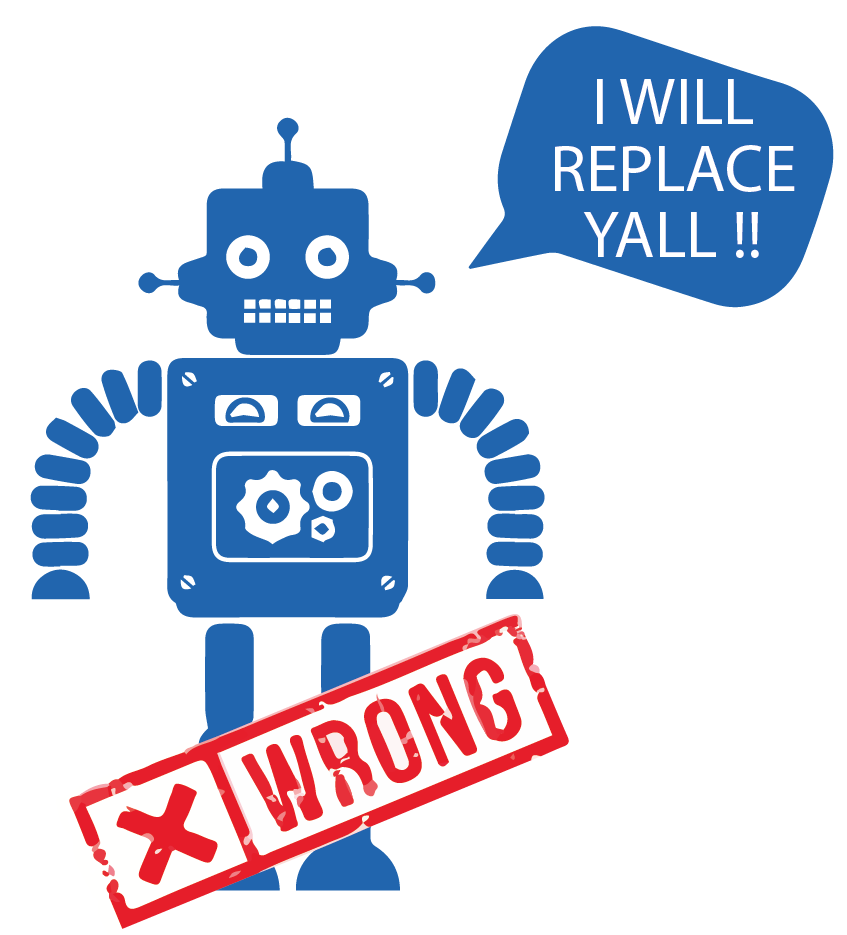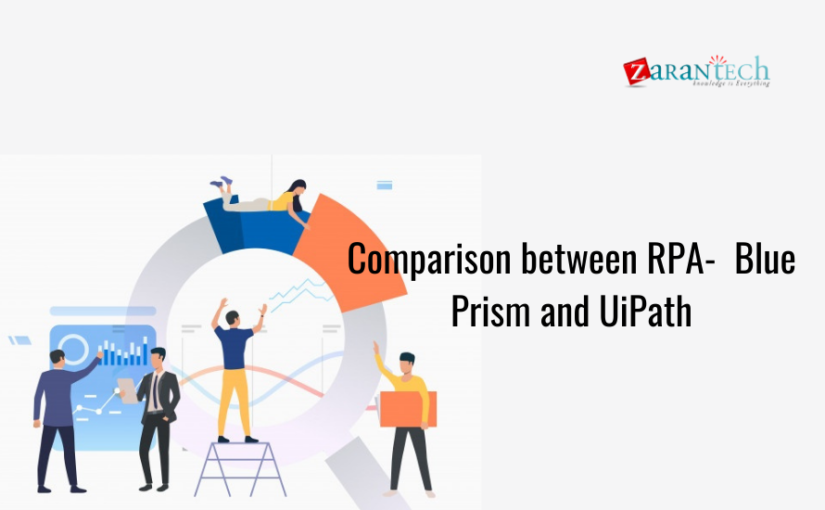RPA – Top 5 Facts and Myths
Category: RPA Posted:Jul 05, 2018 By: Alvera Anto During the last few years Robotic Process Automation i.e. RPA has become the innovative, and popular technology, which is utilized by most of the companies to save time, money and resources. The Enterprises use RPA to carry out the repetitive, manual and various back-office processes through automation. Though RPA has been deployed extensively across a number of industries, still there are certain misconceptions about RPA that how this technology restructures a company’s functioning platform and improves complete productivity.
During the last few years Robotic Process Automation i.e. RPA has become the innovative, and popular technology, which is utilized by most of the companies to save time, money and resources. The Enterprises use RPA to carry out the repetitive, manual and various back-office processes through automation. Though RPA has been deployed extensively across a number of industries, still there are certain misconceptions about RPA that how this technology restructures a company’s functioning platform and improves complete productivity.
There may be a situation of uncertainty which can occur due to the misconceptions about RPA, that is how it will work, its influence on companies and their workforce, and its future development. These myths even create fear for those companies who want to transform their back-office strategies and simplify a thinner value chain. On the basis of our understanding and observation, we as a human being sometimes make assumptions, however, these assumptions sometimes may change into myths which can be started accepting as facts.
To understand the valued suggestions offered by RPA to the companies, there are few most common RPA myths and the facts behind them.
1. The Robot will replace humans: Whenever we heard the term robot, an image of a metal robot with rigid joints appears in our mind. In Robotic Process Automation, the robots which perform the automation task are not the one which we are used to see on television. The robots in RPA are the software robots that carry out the different procedures within the organizations. They are also called as digital workforce or virtual processes which has their own identity and credentials. Many business processes which were performed by humans are now being automated with RPA. The robots basically contain the algorithms developed by RPA developers with the intention of automating the repetitive and routine business processes. These business processes are highly structured, consists of a finite set of tasks and steps, may frequently monotonous and labor intensive. With RPA techniques it is possible for an employee to enhance their efficiency and productivity and they will also be able to give an emphasis on other activities, like sales or marketing, which helps in creating a deep relationship with the customers and business values.
Learn RPA Blue Prism from Industry Experts
To understand this, let us now consider an example related to the real-world that is automating the process of invoice generation. When RPA is executed to perform this process, it will go through all the emails in the system, and all the pdf files which contain the details of the appropriate transactions are downloaded. Then the spreadsheets will get filled up with the details and keep all the records, and RPA would log on to the enterprise system and generate correct invoice reports for each detail in the spreadsheet. Once the bill is ready, a confirmation mail would be sent to the related participants. The RPA users are responsible to specify the individual tasks which should be automated and the rest of the process would be taken care of by the system. Thus, robots are not a physical entity, but they are the software programs which are used to automate the various business processes.

Source:kleptika.com
2. RPA will not work in my industry: RPA techniques are fruitful only in certain industries like finance, this is one of the most common myths. Though the back-office tasks occur in almost all the industry, therefore the RPA is very much more productive in a large number of industries. RPA is used to automate many of the repetitive, rule-based and high-volume business processes in any industry. Its application can be observed in the industries like:
Retail – to manage order processing
Bank – for fraud detection
Insurance industry – for claims processing
Manufacturing industry – for communication with customers
Healthcare industry – for patient scheduling.
3. RPA software is 100% accurate:
![]()
The RPA software robots are not 100% correct, these robots may also make mistakes. Robots have no common sense, so if there is any defect in the robot management process of your business an obvious error may arise into the instruction provided to the robots. The robots will follow the instructions given to them and repeat the same errors many times until it is spotted by someone. As the RPA software robots are capable of doing the tasks in a reliable manner, they will repeat the same mistakes again and again which are present in a workflow. If these defects are not found out at the initial stage of automation process by human employees, these errors may mean that the work would need to be repeated either manually or by re-automating, the tasks after the mistakes are fixed. To avoid such problems, it is essential to confirm that the processes are error-free and optimized before automation and to keep track of the software robots in the early phases of automation.
4. RPA does not value the cost investment: Organizations are continuously searching for the new ways to decrease the costs and due to which they have turned to outsourcing in order to implement different business processes. To automate the back-office tasks most of the companies are moving towards RPA nowadays. There are no preliminary implementation costs involved in RPA, but these are not important as compared to the excessive costs that go together with the business process management software or enterprise resource planning implementation. RPA offers a quick internal cost reduction and substantial increases in ROI. RPA is easy to implement and can provide the quick advantages, even returns on investment are common in between 300 to 800%.

Source:kleptika.com
5. RPA marks the end of business process outsourcing: With the advantage of RPA software, the BPO providers are utilizing it to offer the services to their customers more effectively and on time. Since every front-office task cannot be automated by using RPA, there is always a requirement for the outsourcing even if the RPA develops all the features to provide all the services, due to this reason BPOs are required to stay. In order to sustain a competitive benefit in the market, the BPOs are likely to provide the best services continuously along with the other service providers. To perform all these tasks RPA is now becoming an attractive choice for BPO. With the help of the RPA, the BPOs get the chance to decrease costs, enhance efficiency and gain higher satisfaction and preservation of client. RPA is constantly innovating and converting the nature of BPO providers, instead of marking the end of the BPO.
Well, these are the top myths about the RPA which arises in most of the companies. Apart from these, few misconceptions are also there, let’s have a look at them:
1. The adoption of RPA should be possessed and determined by the IT department: This is another myth that the RPA teams which handle the automation tasks should be a part of the IT department. It is only required for the IT team to provide important resources for the software so that they can function in an effortless manner. The IT professionals are not included in the RPA reliability team which is capable of using the RPA tools but involves the business operations professionals. In a simple manner, the RPA should not have owned by the IT team, but by the entire business and should be driven by the RPA team.
2. One should have basic programming knowledge in order to use the RPA software: This is another myth, which is not at all true. The RPA associates who utilize the RPA system does not require to have programming skills. The only thing which the associates have to understand is how the software performs at the front-end and how they can assign the tasks to the RPA workers to carry out the automation task. But it is required that the RPA system developers should have some programming knowledge like knowledge about scripting languages. The RPA tools such as UiPath, Blue Prism etc. can be developed on different platforms nowadays, so that the RPA developers can build these systems without any bother, even they can also reduce their coding responsibility.

Source:itsquiz.com
3. The RPA software is automated completely and it does not require human management to carry out the automation task: Well, this is another misconception that RPA is completely automated. It requires human involvement in order to program the RPA robots, to feed the automation tasks to them and to manage them in an appropriate manner. There are certain automation factors that combine and performs various tasks which may require multiple humans to finish it off. The RPA systems are so efficient that they avoid the defects completely in the system or the process which occurs due to human mistakes more quickly. It is more advantageous and profitable to have the digital workforce instead of human workforce.
4. RPA is an AI virtual assistant, which is particular to perform the narrow set of tasks: The RPA robots are capable of performing a narrow set of tasks based on the given data set and commands. RPA is a system of rule-based algorithms which can be utilized to capture, process and understand streams of data, activate correct responses and communicate with other processes. But, it is not able to learn on its own, which is an important feature of AI. The other advanced AI concepts like deep learning and reinforcement learning are yet to be included in the RPA systems. Therefore, we can say that RPA bots are not an AI virtual assistant. It is not feasible to think that in future these systems will be able to think on their own, able to decide the best possible way to run a business process and gain knowledge from its own activities to enhance the system.
Learn RPA UiPath from Industry Experts
Conclusion:
Thus, these are the misconceptions which are surrounded to the RPA. These myths can be a complex issue for the companies which consider them as a strategy to update their business and operational processes and to improve their productivity. As these myths may arise due to the lack of knowledge about the technology or little knowledge about its usage, it is difficult to identify them, but the companies that already know the truths behind these myths will be deployed properly in order to gain the advantages of deployment of RPA, specifically as this technology continues to fill more industries and bring extensive transformation to the manner in which the companies are going to structure their operations platform. The knowledge about the RPA’s fundamentals and its suitability in automation activities makes important for the companies to keep on competing and pertinent within their industry.





 99999999 (Toll Free)
99999999 (Toll Free)  +91 9999999
+91 9999999